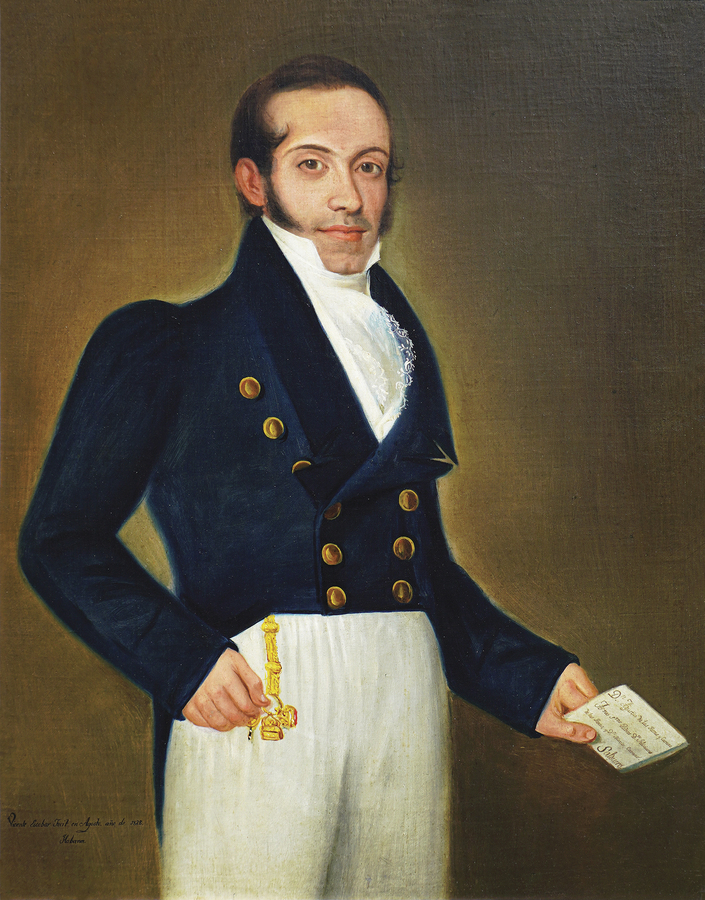 Vicente Escobar Vicente Escobar
Period: Colonial
1757 - 1834
Portrait of D. Agustín de las Heras
D. Agustín de las Heras, 1828
oil on canvas
35 x 27 inches
Vicente Escobar was born in Havana in 1757, and died in the same city in 1834. This artist distinguished himself as a portraitist, leaving behind a gallery of works that illustrated the era’s aristocratic personalities. The sincerity and ingenuity in his works give his extensive oeuvre of portraits a freshness and vitality rarely revisited during the colonial period in Cuba. The historian Francisco Calcagno observes: “Lacking a teacher or a model to imitate, without a school to follow, guided only by his genius and his perseverance, he was able to become a distinguished portraitist of his genre in Cuba.” His works confer a personal seal that ascribes singular attractiveness to his work. Escobar was one of the first painters to have a workshop in Cuba. Numerous students frequented it, among them Juan del Río, his closest and most faithful adherent, and the poet Plácido.
Escobar graduated with honors from the Real Academia de Bellas Artes de San Fernando in Madrid. He undertook an extensive journey through Italy, France, and Spain, after which he was designated painter of the royal house by Queen Maria Cristina of Spain in 1827. Among Escobar’s significant works are a series of portraits of military officials, which at the close of Spanish rule in Cuba were moved to Spain and are actually stored at the Archives of the Indies, in Seville. Among his more celebrated works are: Portrait of Justa de Ayó y Bermúdez, Portrait of Tomás Gamba de las Casas, and Portrait of Child.
Bibliography
Lerner, Bernardo, ed. Enciclopedia Del Arte En America. 1st ed. Argentina: Bibliografica Omeba, 1968.
|
